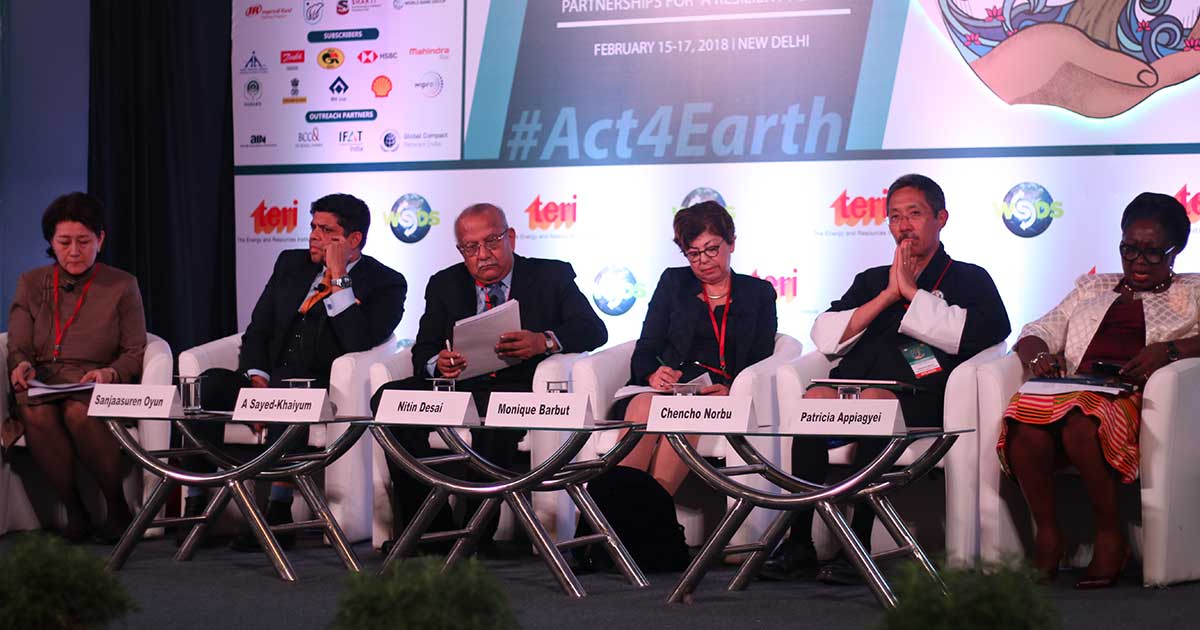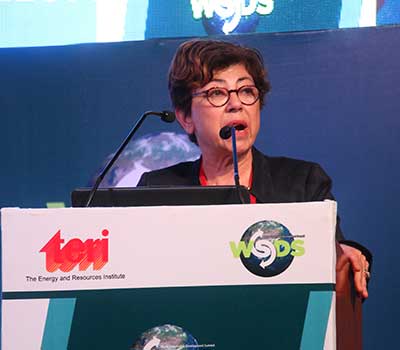
Creating an Agenda for Land
 Environmentalists, policymakers, and academics deliberate over ways to reverse desertification at WSDS 2018
Environmentalists, policymakers, and academics deliberate over ways to reverse desertification at WSDS 2018
When desertification happens, soil erodes, crops die, animals leave, and whole communities get impacted. Such degraded lands are of no use for growing vegetation or rearing livestock, and often bring with them a host of socio-economic and political problems. Today, about 30% of the earth’s land is estimated to be already degraded due to unsustainable use and management. Competition for land resources is expected to increase in the future, particularly where the population is growing rapidly. Developing countries are likely to account for approximately 97% of global population growth by 2050 while land degradation continues to be a contributing factor in the cycle of poverty, diminished livelihoods, and insecurity.
Addressing these concerns in a special session at the ongoing WSDS 2018, environmentalists, policymakers, and academics deliberated over sustainability goals and their interlinkages representing the three dimensions of sustainable development. The panelists at the session included Ms Monique Barbut, Under Secretary-General of the United Nations and Executive Secretary, UNCCD, and HE Mr Aiyaz Sayed-Khaiyum, Attorney-General and Minister for Economy, Public Enterprises, Civil Service and Communications, Government of Republic of Fiji.
 Highlighting the need to take quick action against land degradation, Ms Monique Barbut warned, "India won't be immune to geo-political challenges"
Highlighting the need to take quick action against land degradation, Ms Monique Barbut warned, "India won't be immune to geo-political challenges"
Desertification and displacement
It is estimated that 135 million people will be at the risk of being displaced by desertification over the coming decades. “India won’t be immune to geo-political challenges”, said Ms Monique Barbut, Under Secretary-General of the UN and Executive Secretary, UNCCD.
30% of India's land is already degraded. She estimated that India will be the world’s most populous country by 2050. Two-thirds of Indians derive their livelihood from climate sensitive sectors, such as farming, fisheries, and forestry. Due to increasing hardships and climate change problems, Indians already migrate to urban areas in large numbers seeking a better quality of life, and by 2025, 40% of the Indian population would be urban. The solution to balance the scale, she believes, is to avoid further degradation of new land, and restoring degraded land.
The interconnectivity of land, water, and biodiversity
Land, water, and biodiversity are undeniably interconnected. Mr Nitin Desai, Former Under Secretary General of the United Nations and Distinguished Fellow, TERI, believes that conservation, therefore, needs a much broader perspective instead of looking at specific problems in isolation. Citing an example of this interconnectivity, he talked about the Punjab farmers who are now forced to re-locate the beehives from the trees to the fields because of the mass deforestation and loss of the green cover.
A new land agenda
Land Degradation Neutrality (LDN) is not just another target but an operational framework to help countries accelerate progress towards multiple SDGs, such as poverty reduction, food and water security, gender equity, biodiversity conservation, and climate action. The conservation, sustainable management, and restoration of our land resources—soil, water, and biodiversity—are the three key pillars to anchor policy innovations that translate into action on the ground.